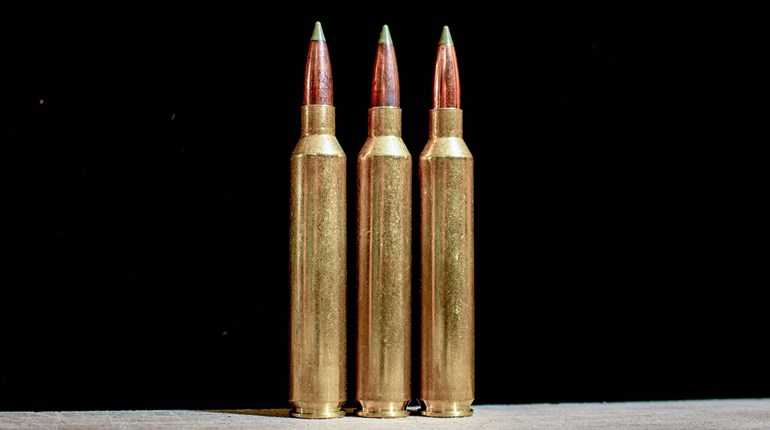
When it comes to military rifles, some take on near-mythical reputations. One of these is the Mark 12 Special Purpose Rifle (SPR), a firearm that served with our troops during the era of the War on Terror and was designed to fill a very specific role with Special Operations forces.
Expanding upon the “designated marksman” rifle concept, the 5.56 NATO Mark 12 has something of a murky background, but was developed by the Naval Special Warfare Center, Crane Division, and was intended to serve as a precision-style rifle that could outperform the M4 Carbine while coming in a package smaller than a full-size M16 rifle. It accomplished this through the use of an 18-inch barrel combined with a rifle-length gas system. Earning a near-legendary reputation, the concept has spawned a number of firearms inspired by its design and intended goals.
One of the most notable of these is a family of firearms designated as the BCM Marksman Rifles line from Bravo Company Manufacturing (BCM) and its BCM Rifle Company division, in particular, the BCM MK12 A5 variant in black (it is also offered with an FDE finish). While BCM may be relatively new to the firearms market, it has quickly made a name for itself producing high-quality components as well as complete rifles.

First impressions of the rifle are quite good. The rifle-length, direct gas-impingement system MK12 sports an 18-inch barrel with a 1:8-inch rate of twist, a PRI Gen III 12-inch carbon fiber free-float handguard, PRI folding front-sight base assembly, an OPS Inc. muzzle brake and collar, a PRI top rail “sleeve” that gives the rifle a contiguous strip of Picatinny rail atop the rifle, an A.R.M.S. #40 folding rear sight and a Vltor EMOD collapsible buttstock.
It is to this general “Mark 12” configuration that Bravo brings its impressive quality control and products. The receivers of the rifle are machined aluminum 7075-T6 forgings that are Type III hardcoat anodized. The upper receiver has M4-style feed ramps that correspond with the M4 feed ramp barrel extension in the rifle. The lower receiver has a Mil-Spec receiver extension (not commercial pattern) housing a Vltor A5 buffer in an intermediate-weight range.

The 18-inch barrel is a BCM unit that is manufactured from 410 stainless steel with an IonBond black coating. It is button rifled, has a hand-lapped bore and 5.56 NATO chamber, and has a Mark 12-style profile. The 1:8-inch rate of twist is a versatile balance between 1:7 and 1:9 twists and is intended to offer a good balance of stabilized performance with a wide range of bullet weights.
Bravo Company also equipped the MK12 A5 with a host of its own “BCMGunfighter” upgrades and enhancements. These include a BCM Gunfighter Trigger Guard, MOD 4 Charging Handle, MOD 3 Pistol Grip, QD End Plate and PNT Trigger. The result is a rifle that is clearly inspired by the original SPR, but has BCM’s own “stamp” on it, as well.
Needless to say, I was very interested in trying this rifle out. Before I describe how I configured it, I want to be up front that I purposely avoided wading into the morass of building a “properly configured” Mark 12-pattern rifle. With the reality of that being so hard to (definitively) pin down, I chose to set up the rifle in a manner “inspired” by the SPR. To that end, I equipped it with a Vortex Viper PST series 2.5-10x44 mm scope and the company’s excellent precision-matched rings (that are machined, serialized and kept in matched pairs). The Viper PST series of scopes is designed to offer high-end performance and an illuminated reticle with a price point around or below $1,000. I also fitted the lower rail of the handguard with a rail-interface folding bipod I had on hand.

I took a selection of .223 Rem. ammunition from Australian Outback, Hornady and Winchester (in a good range of bullet weights) out to the range with the rifle and began putting it through its paces. As I have come to expect from Bravo Company products, the MK12 A5 was an impressive performer. The rifle immediately started running the rounds without a single hitch, and accuracy was quite good.
Although I would not have been surprised if the rifle had shown a preference for the heavier bullet weights, it actually exhibited a distinct liking for the lightest round I was testing (the 45-grain Winchester load). The PNT trigger was not light (with a 6-pound, 3-ounce pull), but was very crisp and clean. The rifle operated perfectly the entire test.
For those looking for a rifle that captures the spirit of the original Mark 12 SPR but still has its own distinct “personality,” the BCM MK12 A5 from the BCM Rifle Company certainly warrants a very close look.






































